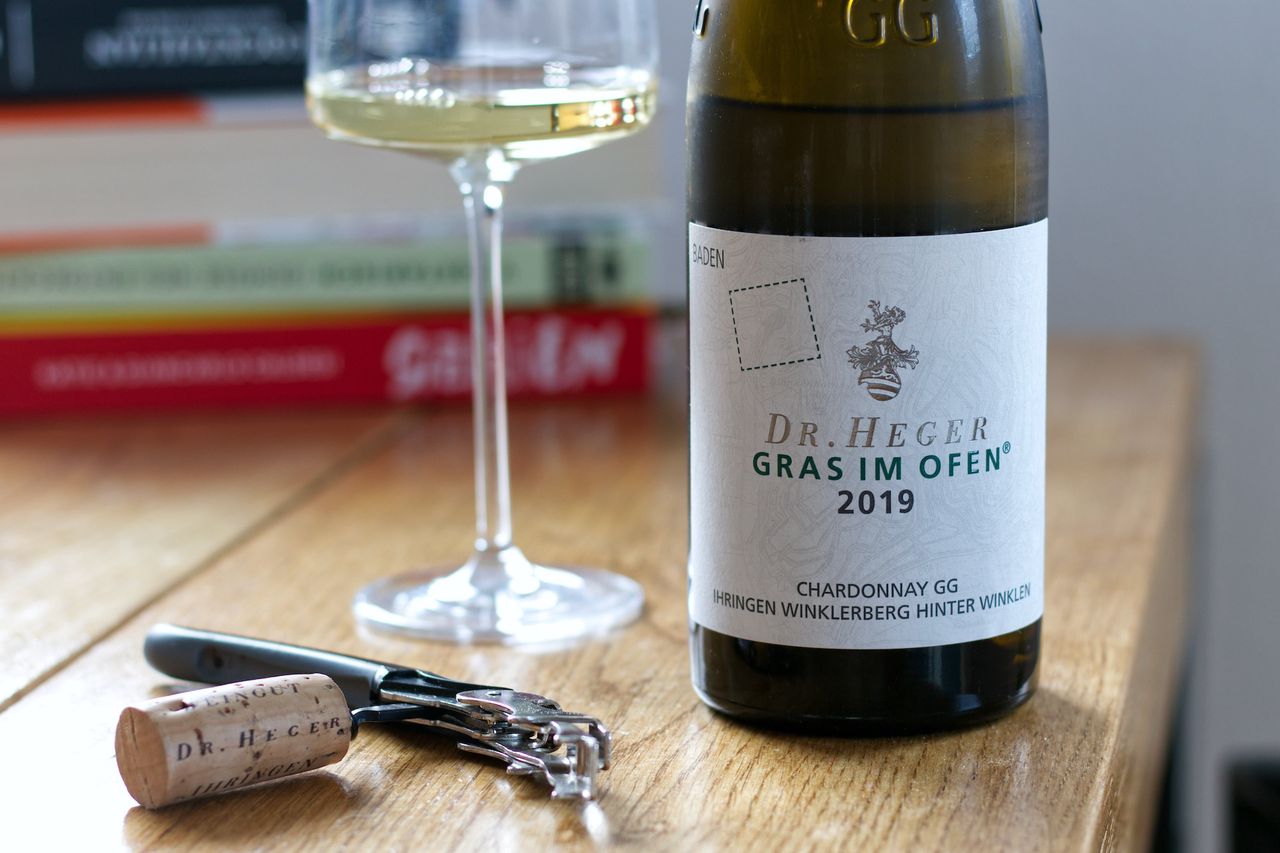Dr. Heger - Gras Im Ofen Chardonnay 2019
We stay in Baden for now and drink from the winery Dr. Heger a Chardonnay Gras Im Ofen 2019.

When it comes to the Ihringer Winklerberg Hinter Winklen, you can feel a little sorry for the people who want to explain it to other people. German vineyard names are sometimes just a bit special. Whether Gras Im Ofen is the better name to convey, I will leave for the reader to decide. We are in any case again in Baden. It started so beautifully last week that we will stay there now a few weeks. More precisely, we are in the Kaiserstuhl now, the warmest piece of wine-growing region in Germany. The plots from which the Gras Im Ofen comes are located in the south-west of the Kaiserstuhl wine-growing region and the vines here grow on volcanic rock. The site itself faces south, but is close to a grove and is partially shaded. This makes it rather cool for local conditions. The Heger family has been making wine here since 1935, with Joachim Heger and his wife Silvia now the third generation to be in charge. In addition to the Dr. Heger winery, there is also the Weinhaus Heger, where the Gutswein and Ortswein qualities are located. The Chardonnay this time is bottled as a VDP Großes Gewächs, which means top of the line. The grapes for this wine were fermented and aged in barrique. Lets see how it tastes.
The wine seems cool and somewhat reserved immediately after opening. There is wood, vanilla, pear and creaminess on the nose. But then what happens on the tongue is much more exciting. The structure starts somewhere in the middle of the tongue and then moves to the outside and remains there practically forever. At the same time, one has the feeling of salt on the lips. In addition, here too, the creaminess and a nice fruit. We really like this right away. It is very noticeably, however, that it is still quite young. That’s why it gets three evenings to unfold.
A day later, the wood has become more intense. The wine feels darker and more powerful. At the same time, however, the creaminess in the mouth has become much more pronounced. There’s papaya and pome fruit on the nose and on the tongue the acidity has clearly gained bite overnight. What it has given up in structure, it has gained in acidity. There is now a lot of tension in the wine and the mouthfeel is still really good.
On the third evening, it does improve again. Of all three evenings, this is now the most harmonious. Where it was full on structure on the first day, full on freshness on the second, it has now found a perfect balance between fruit, structure and acidity. The wood note is clearly in the background by now, the fruit even more exotic with more papaya and a few mangoes. At the same time, you don’t feel like you’re paying for the harmony with a loss of depth or complexity. This is really good.